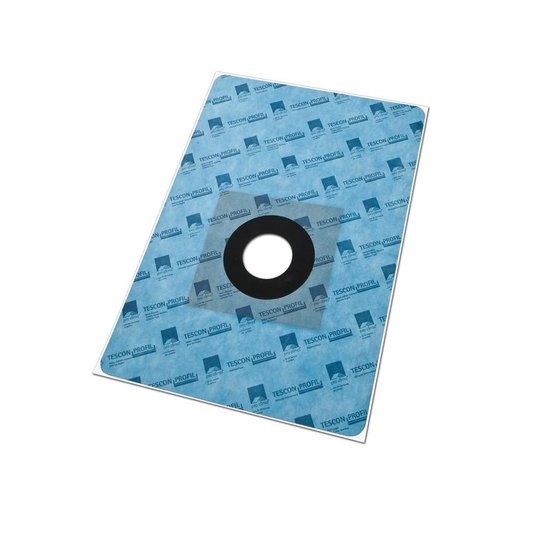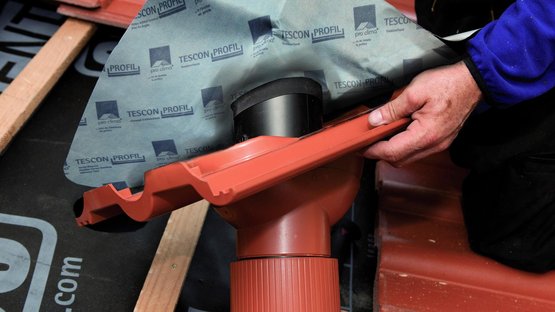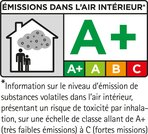Vent pipe grommet


Advantages
- Keeps building structures dry: the protruding sleeve reliably drains water away on the sides
- Permanently tight seal: windtight, waterproof, diffusion-open
- Easy to stick: the grommet protrudes beyond the sides of the vent pipe tile
- Easy to work with thanks to release film with a split in the middle
- Practical handling: the vent pipe can be pushed and pulled through the grommet – the transition remains sealed
- Subsequent work can be carried out with increased flexibility: 6 months of outdoor exposure
- Excellent values in hazardous substance testing, has been tested according to the ISO 16000 evaluation scheme
Areas of application
Grommet for windtight sealing of roofing underlay membranes or wood-fibre boards (in combination with TESCON PRIMER) to pipes underneath vent pipe tiles.
The size of ROFLEX exto enables easy adhesion to the roofing underlay under the vent pipe tile that is already in position. The grommet can be cut to shape as required to adapt to the sealing situation. The adhesive patch is diffusion-open. The impermeable EPDM component has been kept as small as possible.
Installation instructions
General conditions
Stuck joints must not be subjected to tensile forces. Rub the adhesive tapes firmly to secure the adhesive bonds. Ensure that there is sufficient resistance pressure. Windtight or rainproof seals can only be achieved on roofing underlay membranes that have been installed without folds or creases.
Substrate
Clean subsurfaces before applying the patch. Adhesion is not possible on frozen surfaces. There must be no water-repellent substances (e.g. grease or silicone) on materials to be sealed. Subsurfaces must be sufficiently dry and stable.
Permanent adhesion is achieved on all pro clima exterior membranes and on other underlay and breather (WRB) membranes (e.g. those made of PP and PET). Also bonds to MDF and wood-fibre underlay panels. Pre-treatment with TESCON PRIMER is required in the case of adhesion to wood-fibre underlay panels or on smooth, mineral subsurfaces. Concrete or plaster subsurfaces must not be sandy or crumbling.
The best results in terms of reliability are achieved on high-quality subsurfaces. It is your responsibility to check the suitability of the subsurface; adhesion tests may be necessary in certain cases. Pre-treatment with TESCON PRIMER is recommended in the case of subsurfaces that have insufficient stability.








